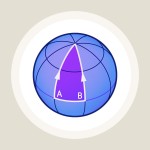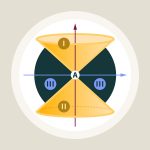Dictionary
error (measurement)
No measurement of a physical quantity is perfectly exact – all measurements have a certain resolution or error. In particular, in measuring a physical quantity there will be a myriad of tiny disturbances (such as fluctuations in the electronic circuits used, atmospheric fluctuations in the observation of a star). Due to these disturbances, repeated measurements will sometimes give a result that is a tad too high, at other times one that is a tad too low. Such unsystematic disturbances can be described with the help of mathematical statistics. In particular, the following holds true: If the same type of measurement is repeated sufficiently often, then the results can be used to estimate both the true value of the measured quantity (the average value of the measurements) and a measure for the accuracy of the measurement (the “standard error”, also called “measurement error” or “accuracy”).
In publishing the results of measurements, it is usual to give for each result both the best approximation to the true value and an estimate of the accuracy of that approximation. Typically, a result will be written in a form such as γ=0.99983 ± 0.00045, the translation of which is: the best estimate for the quantity γ that results from the measurements is 0.99983, and the combined measurements have the accuracy 0.00045. Alternatively, the same result might be written as γ =0,99983(45), where the digits in parantheses (here 4 and 5) indicate the accuracy of the last digits of the result itself (here 8 and 3).
The error or accuracy is an estimate of the difference between the measurement result and the true value. One widely used convention (called “two sigma”) is to use an accuracy with the following meaning: Consider a measurement of some physical quantity that gives an estimate X and an accuracy Y. Then the probability that the true value of that quantity lies somewhere between X-Y and X+Y is 95.5 percent. With another convention (“one sigma”), the probability is only about 68 percent (but in that case, there is a probability of 95.5 percent for the true value to lie between X-2Y and X+2Y). Often, estimates for systematic errors are included in the stated error as well (systematic errors do not manifest themselves in random fluctuations around the true value, but in systematic deviations – for instance, the measured value might systematically tend to be higher than the true value).










